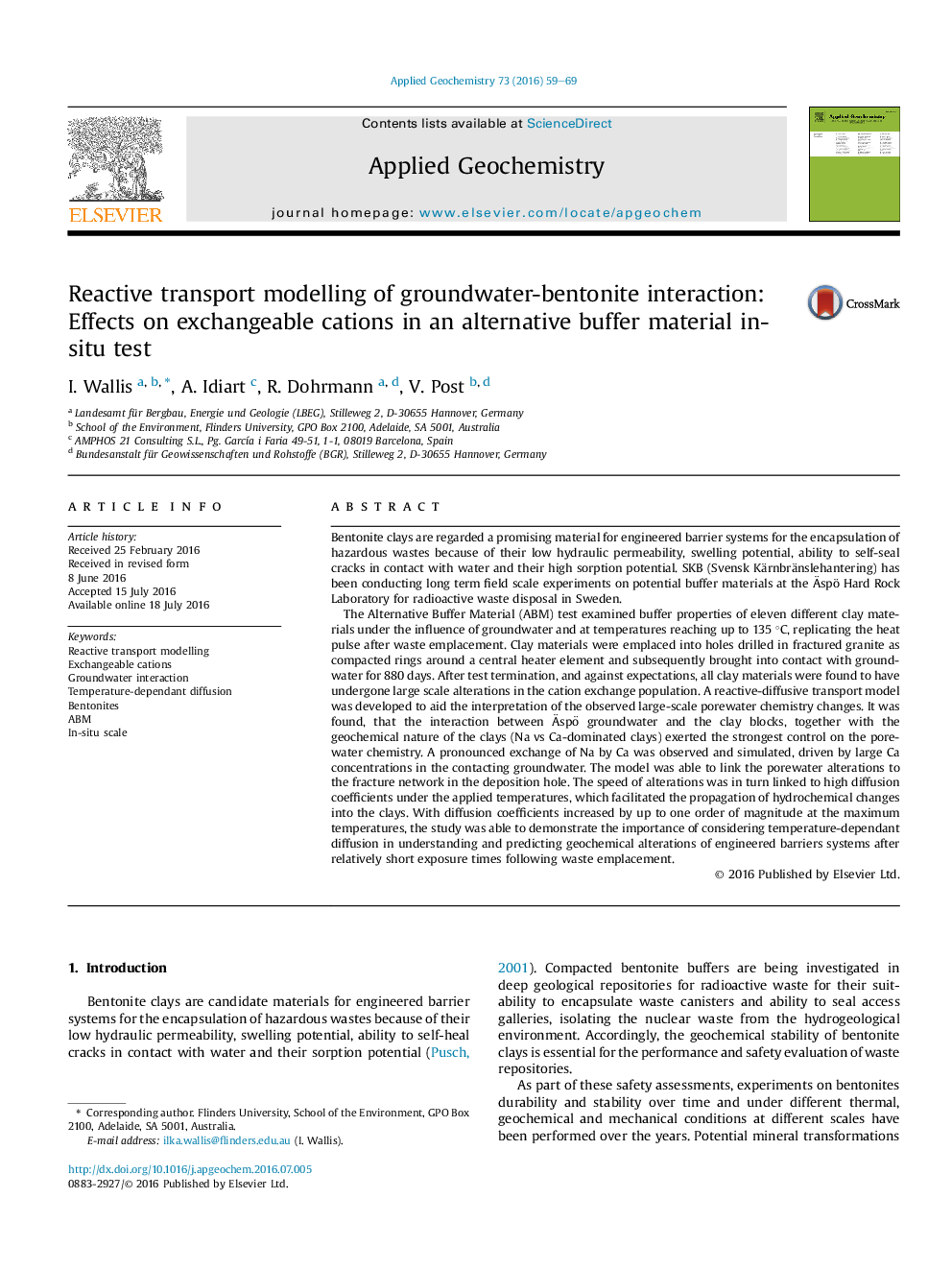| کد مقاله | کد نشریه | سال انتشار | مقاله انگلیسی | نسخه تمام متن |
|---|---|---|---|---|
| 4435538 | 1620218 | 2016 | 11 صفحه PDF | دانلود رایگان |
• Simulation of changes in exchangeable cations in engineered barrier in-situ test.
• Porewater chemistry controlled by ion exchange and through interaction with groundwater.
• Propagation of hydrochemical changes into clays linked to temperature-dependant diffusion.
• Temperature-dependant diffusion important for predicting geochemical alterations in clays.
Bentonite clays are regarded a promising material for engineered barrier systems for the encapsulation of hazardous wastes because of their low hydraulic permeability, swelling potential, ability to self-seal cracks in contact with water and their high sorption potential. SKB (Svensk Kärnbränslehantering) has been conducting long term field scale experiments on potential buffer materials at the Äspö Hard Rock Laboratory for radioactive waste disposal in Sweden.The Alternative Buffer Material (ABM) test examined buffer properties of eleven different clay materials under the influence of groundwater and at temperatures reaching up to 135 °C, replicating the heat pulse after waste emplacement. Clay materials were emplaced into holes drilled in fractured granite as compacted rings around a central heater element and subsequently brought into contact with groundwater for 880 days. After test termination, and against expectations, all clay materials were found to have undergone large scale alterations in the cation exchange population. A reactive-diffusive transport model was developed to aid the interpretation of the observed large-scale porewater chemistry changes. It was found, that the interaction between Äspö groundwater and the clay blocks, together with the geochemical nature of the clays (Na vs Ca-dominated clays) exerted the strongest control on the porewater chemistry. A pronounced exchange of Na by Ca was observed and simulated, driven by large Ca concentrations in the contacting groundwater. The model was able to link the porewater alterations to the fracture network in the deposition hole. The speed of alterations was in turn linked to high diffusion coefficients under the applied temperatures, which facilitated the propagation of hydrochemical changes into the clays. With diffusion coefficients increased by up to one order of magnitude at the maximum temperatures, the study was able to demonstrate the importance of considering temperature-dependant diffusion in understanding and predicting geochemical alterations of engineered barriers systems after relatively short exposure times following waste emplacement.
Figure optionsDownload as PowerPoint slide
Journal: Applied Geochemistry - Volume 73, October 2016, Pages 59–69
